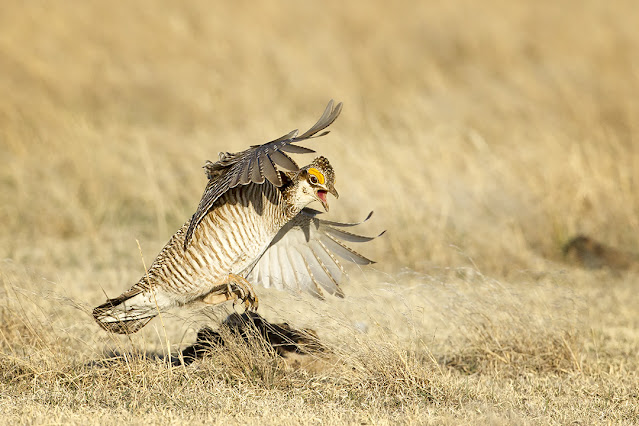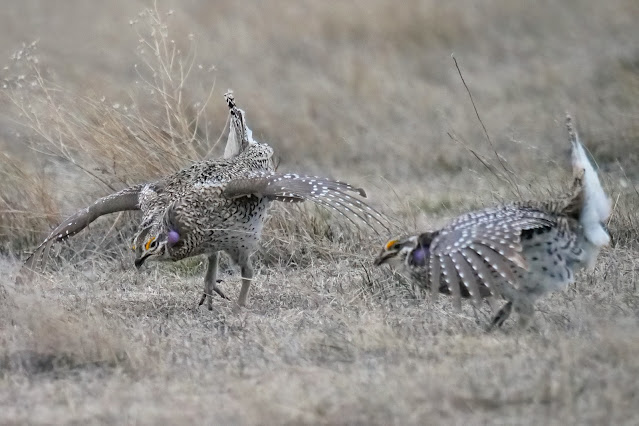Here We Go Again!
It's BREEDING SEASON on the prairie again! Christine and I, creators of Chicks on a Grouse Trip, are back at it and have plans to be there for the action. Thanks for joining us for another year of grouse blogging!
This year you'll find us on the plains in the state of Colorado searching for Greater Prairie Chickens (Tympanuchus cupido). Similar but different from the Lesser Prairie Chickens (Tympanuchus pallidicinctus) we photographed in Kansas in 2022.
Note: the image above is a Lesser PC taken in Kansas as we later realized we did not photograph Greater PC's in 2022. Watch for future posts with images of Greater PC's from the field and follow our latest adventures.
It is so much easier to identify birds during breeding season, especially male birds, as most birders and bird photographers know. So descriptions in this article address male features and behaviors.
The two prairie chicken species are hardly discernible without their air sac exposed. Greater PC's are quickly identified by their yellowish-orange air sacs while Lesser PC's are reddish-orange in color. But there are additional ways to identify them.
Greater PC's are slightly larger birds with darker barring that extends more prominently down the
breast. GPC's occur primarily in large untilled areas of tallgrass or mixed-grass prairie. Populations
require thousands of acres of native grassland to survive. LPC's survive on shortgrass and mixed-grass prairies, sand sagebrush and shinnery oak
shrublands. GPC's generally do not migrate and will occupy the same habitat year-round. So, start by taking note of where you are. Location will help guide you to the correct identification.
Both PC's have prominent feathers called pinnae extending from their necks, high above their head like horns. But pinnae are not horns, they are display feathers there to help establish a position within the lek and impress the opposite sex for breeding rights.
Both species have feathered feet and a bright yellow eye comb.
To confuse matters, hybridization occurs between GPC & LPC in northwestern Kansas. It is unknown if hybrids produce offspring.
As of this writing, the conservation profile of Greater Prairie Chickens is vulnerable and on the IUCN Red List of Threatened Species. The main threats to GPC are habitat loss, modification and fragmentation. Intensive agricultural activities, wind and energy development, woodland encroachment and urban sprawl all play a part in the 50% decline of the species since 1970.
Enjoy all future posts by bookmarking https://chicksonagrousetrip.blogspot.com/. Thanks for your support!





Comments
Post a Comment